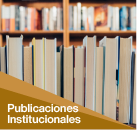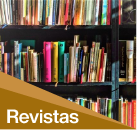Cuentos Andinos para Fortalecer la Comprensión Lectora en L2 en los Niños y las Niñas Quechua hablantes
Fecha
2024-06-03Autor
Huañahui Pumacallahui, Yeni
Nivel de Acceso
Acceso AbiertoMetadatos
Mostrar el registro completo del ítemResumen
Con esta investigación se pretende indagar sobre la teorización de los niveles de comprensión lectora en castellano como segunda lengua en estudiantes quechua hablantes, utilizando el cuento como estrategia en el ámbito educativo. Desde ese punto de partida, se ha registrado información sin perder la ilación y las expectativas planteadas en el Diseño Curricular Nacional. En ese sentido, este estudio se estructura en tres ejes temáticos, que me han motivado a reflexionar acerca de la historia de los cuentos en el contexto mundial y de los Andes; el fortalecimiento del castellano como segunda lengua en la Educación Intercultural Bilingüe (EIB), con base en metodologías de enseñanza en L2; enseñanza recíproca; comprensión lectora; competencias interpretativas y argumentativas; los niveles de comprensión lectora, y, por último, los cuentos como estrategia pedagógica con el fin de facilitar el proceso de enseñanza aprendizaje de niños y niñas. Esta investigación permite una mirada apreciativa, en primer término, para atender procesos de comprensión lectora que valoran prácticas de culturas locales, tanto para los docentes como para niños y niñas; y, en segundo lugar, para situar relatos propios de la comunidad en la escuela EIB. Abstract This research aims to investigate the theorization of the levels of reading comprehension in Spanish as a second language in quechua-speaking students, using the story as a strategy in the educational field. From that starting point, information has been recorded without losing the connection and expectations raised in the National Curricular Design. In that sense, this study is structured into three thematic axes, which have motivated me to reflect on the history of stories in the global context and in the Andes; the strengthening of Spanish as a second language in Intercultural Bilingual Education (EIB), based on L2 teaching methodologies; reciprocal teaching; reading comprehension; interpretive and argumentative skills; the levels of reading comprehension, and, finally, stories as a pedagogical strategy in order to facilitate the teaching-learning process of boys and girls. This research allows an appreciative look, firstly, to address reading comprehension processes that value practices of local cultures, both for teachers and for boys and girls; and, secondly, to place the community's own stories in the EIB school. Keywords: Spanish as a second language, quechua speakers, reading comprehension and stories. Pisi Rimayllapi Willasayki Kay maskaymi qallarin castellano simita mat’ipanapaq, ichaqa kay llamka’aytaqa paqarichikamun llapallan yachaqkunaq maykunachu pishita rimanku kay castellano simita chaykunapaq, allin mat’irinapaqmi ñuqa aparimuni kay propuesta hinata qhawarichini kay willakuykunata anyarate ayllumanta man yachaykunata hatun machulanchis yacharinku, chay mana chinkarinanpaqmi kay patarawillakuykuna ruwarikunqa. Imaraykuchu yachachiqkunaqa munanchis o mashkarinchis kay material pedagogico nisqata campo puririykunapi, yachaywasipi yachachinapaq, ichaqa kay material ruwarinapaq mashkarikuran Araycalla Anyarate ayllupi, taprurikuran hatun yachaqkunata, hatun umalliqtawan, mama taytakunata hinallitaq wawakunata, kay yachaqkunan, yanapan castellano siminkuta, aswan ñawpaqman allinta sumaqta rimarinankupaq, kay yachayñinchiskuqa sumaqmi wawakunaq yachachinanchispaq, yachachiqkunaqa alilinta mash karinanchis llamka’asqanchis ayllupi, allinta yachachinanchispas kay castellano simita, wawakunaq allinta y misk’ita rimarikunankupaq. Chanin rimaykuna: castellano rimay, willakuykuna.







